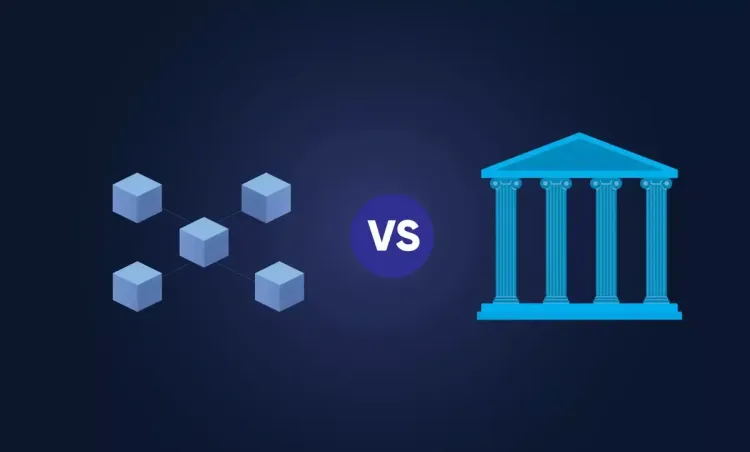Open banking is altering the way customers approach finance by allowing users to easily control their funds and interact with their banks. With the use of open banking, third parties can now access sensitive banking information with the customer’s consent, which will allow for a more transparent, innovative, and convenient relationship between the customer and the banking institution. This huge shift has provoked a discussion on how we approach banking while simultaneously raising issues on privacy protection and security. Although the innovation brings a myriad of benefits, it would seem that negative implications are inevitable. The goal of this article is to present how open banking operates and the potential benefits and risks it entails.
What is Open Banking?
Open banking is when customer information is shared by banks with third-party companies that have been given specific reforms from the customers. This information exchange is only done with the permission of the customer, which allows for new and enjoyable services such as budgeting tools or payment systems. The main purpose is to enable a more effective and innovative infrastructure by accelerating competition.
The Positives of Open Banking
Open banking allows clients easy access to financial services, which is one of its biggest advantages. It allows clients to view all their accounts in one app as well as track their entire financial situation. This feature supports better decisions and strategies regarding funds. The use of open banking, allows fintech firms to develop tools that are relevant to the customers, such as AI-powered budgeting tools and more efficient payment systems. The open banking system also increases rivalries between banks, which forces them to improve the quality of their services in order to attract more customers. When it comes to businesses, open banking enhances payment method efficiency, lowers transaction costs, as well as enhances cash flow control. This greatly benefits small and midsized companies that want to be more efficient in their work.
The Negatives Of Open Banking
Even with its benefits to clients, open banking has its challenges. One of the challenges is around data privacy, especially for customers who are more cautious. Once clients share their sensitive details with a third party, they run the risk of unauthorized use as well as data breaches, no matter how secure the infrastructure is. Customers are mostly still unclear about how open banking functions, which can lead to some misunderstanding. A lot of customers have not had the chance to understand how data may be shared and its impact. Because of this, the rate at which the new products are adopted can be lowered and there will be limits on the advantages that can be gained. The rise of fintech firms in the open banking sector represents a threat to traditional banks. These older institutions might find it difficult to cope with these tech-savvy companies that are revolutionizing the industry. Furthermore, the costs of integrating and supporting open banking systems can be quite high in the beginning, which can disrupt some of the existing firms financially. An important expectation of open banking is the increase in visibility into the finances of a person. With a simple view of all the data, customers will be able to monitor their spending behaviours, locate wasteful expenditures, and balance their budgets more efficiently. These abilities assist people to trust banks as well as spend sensibly; hence, it helps to improve overall decision-making.
Security in Open Banking
The utmost importance is given to security in open banking. To mitigate risks, more advanced measures such as the GDPR and PSD2 regulations have been issued to protect customer information. Open banking utilizes sophisticated encryption and other secured APIs to facilitate the safe exchange of information. However, there’s no denying that new systems come with their own set of risks, and constant monitoring is vital to building trust and establishing secure environments.
Open Banking’s Effect on Fintech Growth
A paradigm shift has already happened through open banking, and it now has become a pillar of supporting modern-day fintech. Services such as bespoke loans, guided investments, or even personalised saving strategies are born from the data made available by customers, and these services were made possible when companies started adopting open banking. Open banking has revolutionised a specific sector of the finance industry.
Barriers to Open Banking Acceptance from Consumers
Open banking, adopting the modern world, has brought plenty of advantages. However, its adoption among users is still lacking. Due to cooperation and financial scandals happening over recent years, many seem to be uneasy when asked to share their banking details, and rightfully so. This calls for awareness campaigns that are focused on erasing the misconceptions surrounding open banking.
The Impact of Open Banking on Small Enterprises
The positive impacts of open banking on small businesses encompass rapid payment systems, efficient cash flow supervision, and innovative tools for financial management. Integrating practical banking data with accounting simplifies business operations and aids in making informed and calculated decisions. First-rate small business practices encourage growth and competitiveness in an already competitive market.
Open Banking: The Development and Expansion From A Global Perspective
Open banking has experienced fast and sustained growth around the globe, with regions like Europe and the UK leading. Legislative developments like PSD2 have paved the way for its acceptance, inciting banks and fintech companies to work together. Concerning the rest of the world, adoption depends upon international regulatory and market readiness. However, the global sentiment indicates prospects thumbs up for open banking policy adoption being a normal practice.
Open Banking: An Ethical Approach
As open banking develops further, ethical issues emerge. Fair access to services, elimination of data misuse, and dismantling secrecy in transactions have become crucial for the very ambiance and proper functioning of open banking policies. Trust and confidence in financial institutions and service providers lie in the adherence to ethical practices.
The Potential of Open Banking
Open banking provides a lot of hope for the future, as technology is now giving rise to new advancements like blockchain, AI, and machine learning. These new technologies will significantly enhance the security and functionality of open banking, thereby enhancing the experience for consumers and businesses while maintaining privacy.
Conclusion
The implementation of open banking innovation for financial institutions opens up endless possibilities, transforming the way customers interact with these banks. Even though this concept holds a lot of promise for the future, it does face some data privacy concerns along with security issues. Such issues can easily be solved with measures such as providing reliable education alongside strong security methods, paving the way for a more customer-focused financial ecosystem. With time and improvements to the underlying technologies, banking will become an essential part of life owing to the many benefits it brings.




